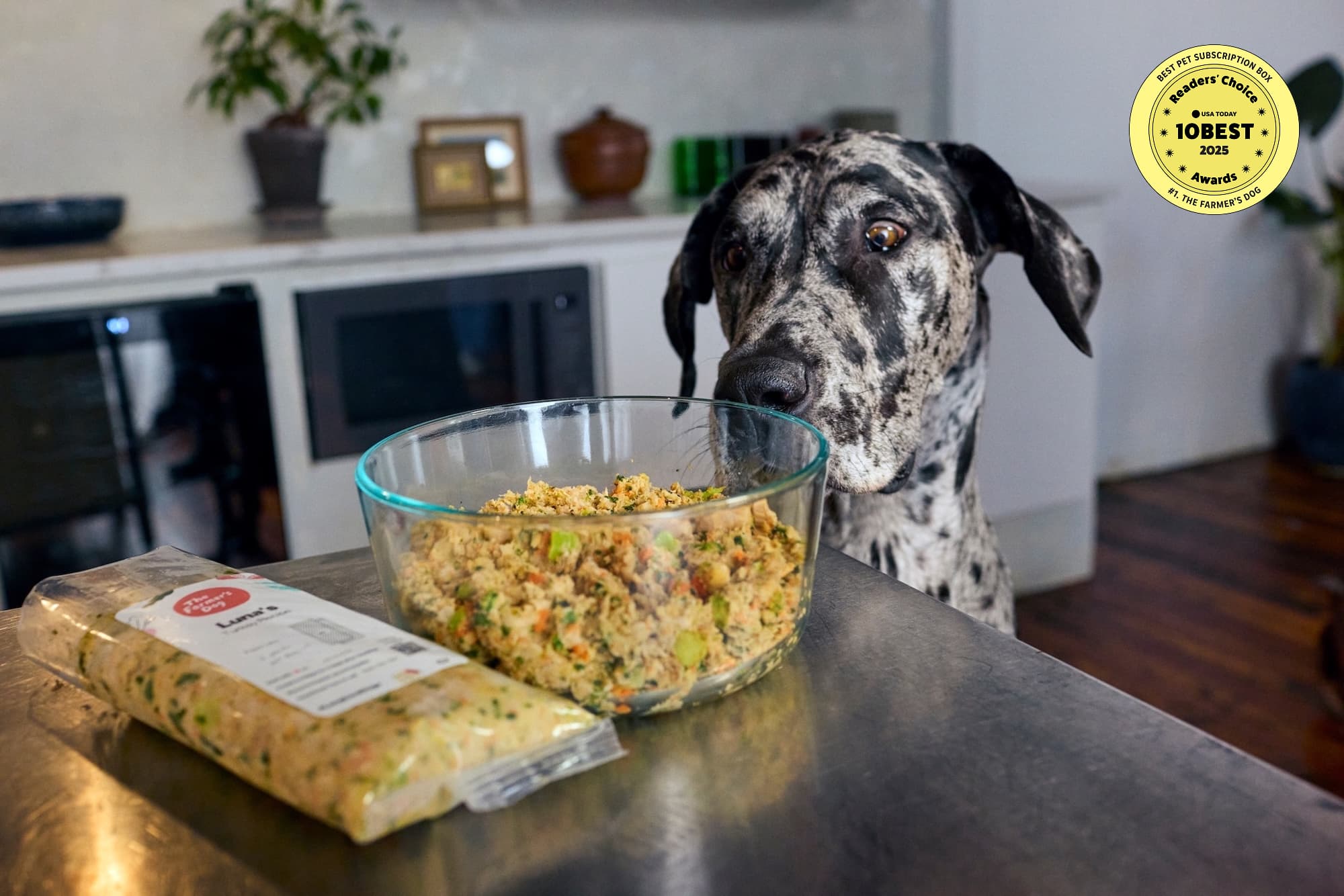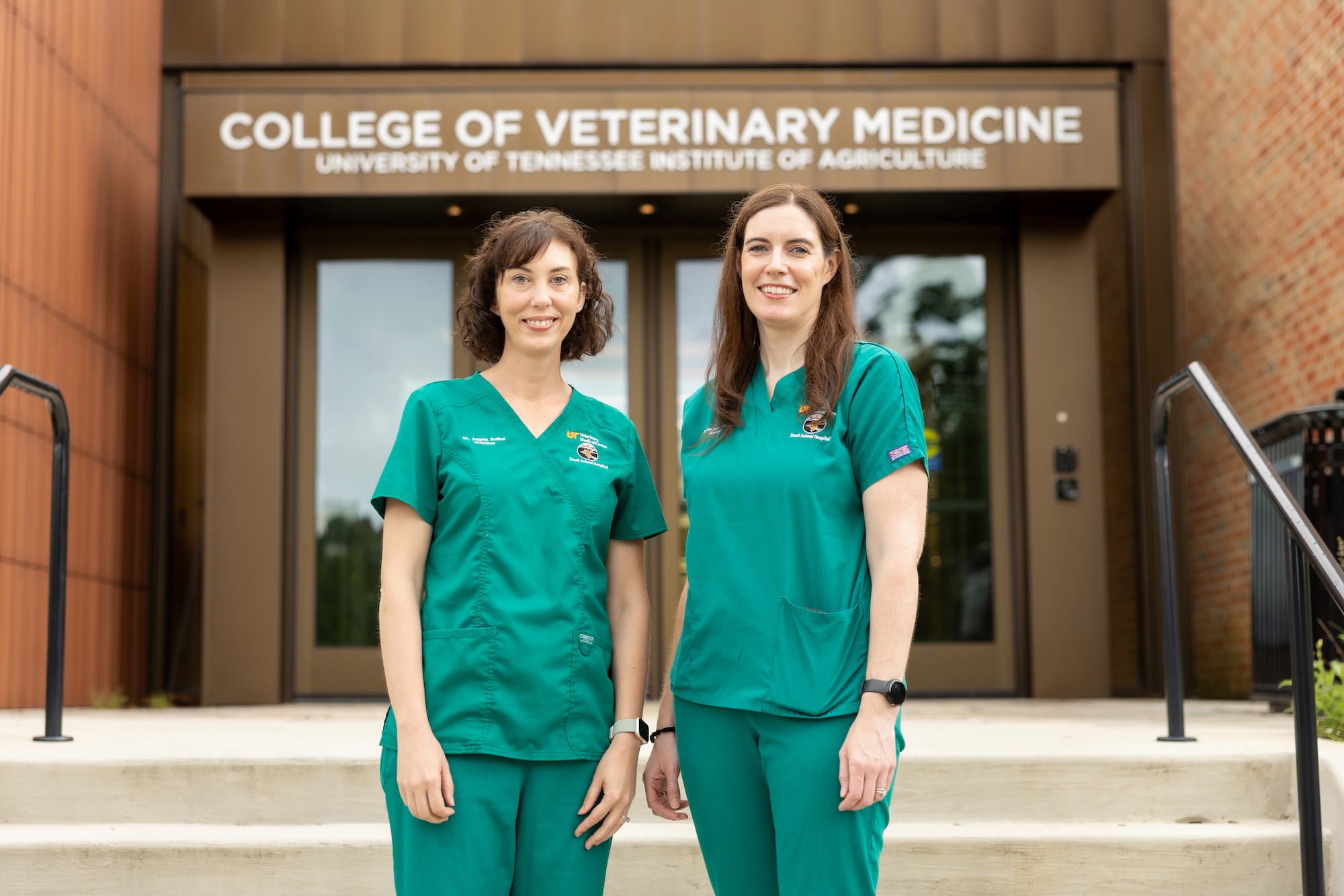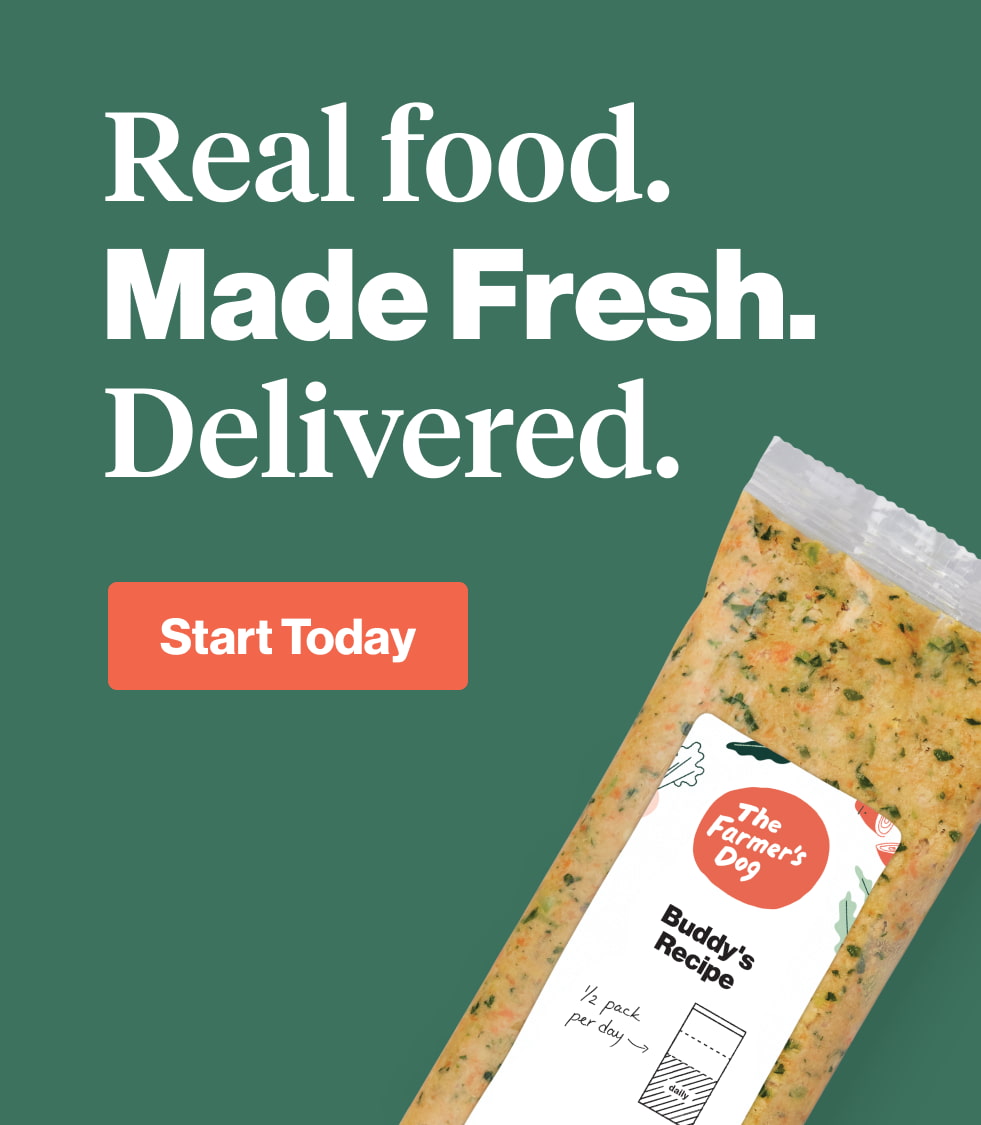Key points:
- The Farmer’s Dog meets or exceeds all of WSAVA’s guidelines for selecting pet food.
- We have four on-staff, board-certified nutritionists—including a board-certified companion animal nutritionist and three Board-Certified Veterinary Nutritionists®. They formulate and conduct studies on all of our foods.
- All of our formulas are 100% complete and balanced.
- Every step of our sourcing, cooking, packaging, and storage processes meets the same standards required for human food. All of our facilities are third-party food-safety certified according to Global Food Safety Initiative standards.
- We continue to conduct extensive scientific research—including a recent long-term feeding study at the Cornell University College of Veterinary Medicine reinforcing that our food meets dogs’ long-term nutritional needs.
- We provide detailed nutritional information for all of our recipes, and customize portions for each dog to ensure they consume the right number of calories to achieve and maintain a healthy body condition.
The World Small Animal Veterinary Association (WSAVA) is a global organization focused on raising the standards of small animal veterinary care around the world. The organization provides many resources for veterinarians and pet owners, including guidelines for selecting pet foods. These guidelines focus on evaluating each company in relation to their nutritional expertise, food safety and quality control practices, and nutrition research.
Our human-grade foods and manufacturing processes meet or exceed WSAVA’s guidelines for selecting pet foods.
WSAVA writes that “If the manufacturer cannot or will not provide any of this information, veterinarians and owners should be cautious about feeding that brand.”
We’ve included all of WSAVA’s questions, and our answers, below; if you have any more questions, please feel free to reach out anytime by emailing help@thefarmersdog.com or calling 646-780-7957.
What to look for in a brand
1. Do they employ a nutritionist? Appropriate qualifications are either a Ph.D. in Animal Nutrition or Board Certification by the American College of Veterinary Nutrition (ACVN) or the European College of Veterinary Comparative Nutrition (ECVCN).
Yes, The Farmer’s Dog employs both Ph.D., board-certified nutritionists and Board-Certified Veterinary Nutritionists®.
Our on-staff, board-certified nutritionists are:
• Rae Sires, DVM, DACVIM (Nutrition)
• Renee Streeter, DVM, DACVIM (Nutrition)
• Joseph Wakshlag, DVM, Ph.D., DACVIM (Nutrition)
• Ryan Yamka, Ph.D., M.S., PAS, FACN, Dipl. ACAS (Companion Animal Nutrition)
2. Who formulates the diet? Is the recipe developed by an experienced pet food formulator (MS or PhD in Animal Nutrition), a veterinarian, or a pet owner/breeder/trainer?
On-staff board-certified nutritionists formulate every one of our recipes, and oversee every step of the products’ lifecycle—including clinical studies.
3. What is the quality control process for ingredients and finished products? Diets formulated to meet Association of American Feed Control Officials (AAFCO) or European Pet Food Industry Federation (FEDIAF) guidelines should meet their nutrient profiles. Does the diet meet the profile based on analysis using a nutrient database or on chemical analysis of the finished product?
Manufacturers and pet food providers should have adequate quality control to ensure companion animal and owner safety. This should include ingredient (food and supplement) validation, final diet nutrient analysis, toxicology, bacteriology, and packaging/shelf-life screenings prior to, during, and after manufacturing.
All our foods are formulated to be 100% complete and balanced according to AAFCO standards, and a typical nutrient analysis for each food is available upon request. Customers can get this information by contacting our customer service group, and veterinary professionals also have the option of doing so through our online Veterinary Team Portal.
The Farmer’s Dog food is raising the bar on pet-food standards. Our Manufacturing and Food Safety, Quality, and Regulatory (FSQR) teams continuously monitor food safety and quality assurance programs to ensure production facilities meet human-food industry standards—and those facilities are third-party food-safety certified.
We have a team of credentialed food-safety experts, including a full-time dedicated microbiologist, focused on screening, monitoring, and verifying the safety and quality of all of our products. Every step of our sourcing, cooking, packaging, and storage processes meets the same standards required for human food.
4. What kind of product research or nutrition studies have been conducted? Is it published in peer-reviewed journals? Pet food companies are not required to conduct or sponsor nutritional research in order to produce and sell a food, but when they do, it indicates a commitment to animal health and wellness.
• We have conducted a multi-year feeding study to ensure that our food is 100% complete and balanced with bioavailable nutrients.
• Third-party palatability studies have clinically shown that our ready-to-eat recipes are highly palatable.
• Third-party digestibility studies have clinically proven that our recipes are highly digestible.
• Third-party studies have clinically shown that our recipes can help reduce the risk of urinary stone formation in dogs.
And that’s only the beginning. We are also partnering with multiple leading U.S. veterinary colleges and esteemed faculty on cutting-edge research to advance nutrition science. The Farmer’s Dog recently conducted a unique long-term feeding study at the Cornell University College of Veterinary Medicine, reinforcing that our food meets dogs’ long-term nutritional needs. The study was the first result of our company’s additional $10 million investment in veterinary research. We’re also a WSAVA Diamond Partner and a charter sponsor of the Association for Pet Obesity Prevention (APOP).
What to look for on a label
5. Nutrition Adequacy Statement: Is it a complete diet? Foods should be labeled to indicate if they provide a “complete” diet with all required nutrients. The label might also specify if this was determined via life stage feeding trials vs formulation to meet requirements.
Yes, our foods are complete and balanced according to AAFCO standards. Our foods meet AAFCO nutrient profiles by formulation and are also regularly tested for a complete AAFCO nutritional profile plus taurine, carnitine, and total dietary fiber by a third-party laboratory. In addition, our foods have successfully completed a multi-year feeding study that we designed in conjunction with a Board-Certified Veterinary Nutritionist ® to surpass AAFCO feeding trial standards.
6. How many calories per gram or serving of food? Obesity prevalence is increasing in pets in many areas of the world. Having access to accurate pet food caloric content can help prevent unintended overfeeding. Calorie information is only required on pet food labels in the US. Where it is not provided on the label it should be available by contacting the manufacturer or calculating from label nutrient analysis.
The number of calories per gram of our food depends on the recipe selected. Clear, specific calorie information is presented to every customer when they sign up for a plan for their dog, and is available on their account page at any time. We provide personalized, pre-portioned packs of food tailored to each dog’s specific caloric needs, so dog owners can see exactly how many daily calories they’re feeding. These customized plans make portion control simple and all but eliminate the chance of unintended overfeeding.
7. Does the company provide immediate contact information such as a phone number or email address? Company representatives should be easily accessible for additional questions, such as the level of specific nutrients not on the label. Pet food companies should be able to provide an “average” or “typical” analysis for all essential nutrients in their food.
Yes—you can request detailed nutritional information from our incredible customer service team at help@thefarmersdog.com or 646-780-7957 (24 hours a day, 7 days a week). Additionally, our third-party typical nutrient analysis, digestibility results, and relative supersaturation (RSS) urinary study results are available to veterinarians on the Veterinary Team Portal and in our Nutrition Guide (accessible via our portal).
8. Who makes the food? Companies may make their own food (i.e., “Made by”) or use a third-party manufacturer (i.e., “Made for” or “Distributed by”).
At The Farmer’s Dog, we go above and beyond traditional pet food manufacturing standards and regulations by partnering with USDA-inspected and FDA-registered facilities in the U.S. that produce human food.
We require each facility to hold a USDA grant of inspection and have on-site inspectors employed by the USDA. In addition, we require all locations to maintain Global Food Safety Initiative (GFSI) certification. Our internal FSQR group has extensive experience in human food safety. On top of third-party inspections, our FSQR team conducts regular Food Safety Assessments on our facilities.
This article was originally published in February 2021 and was updated February 2024 and April 2025.




